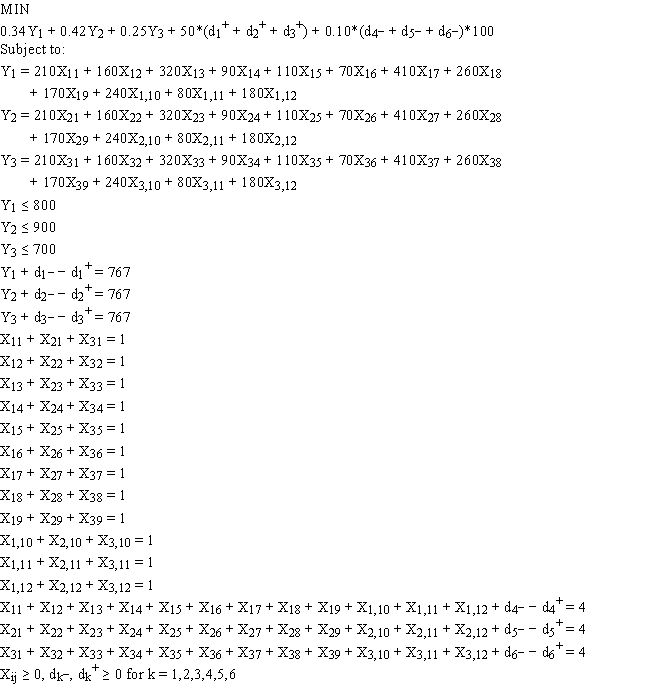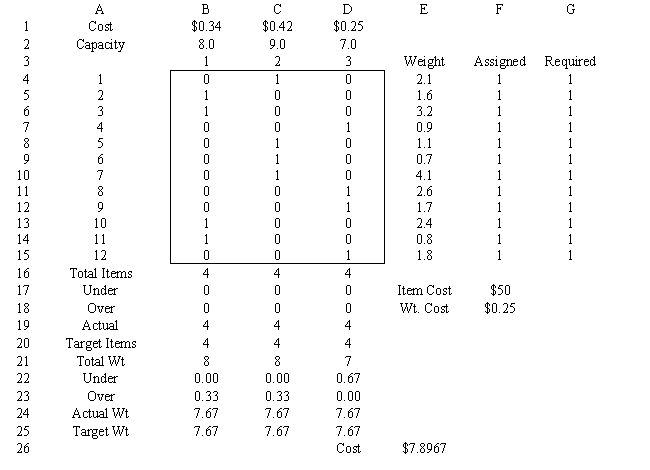Exhibit 7.4
The following questions are based on the problem below.
Robert Gardner runs a small, local-only delivery service. His fleet consists of three smaller panel trucks. He recently accepted a contract to deliver 12 shipping boxes of goods for delivery to 12 different customers. The box weights are: 210, 160, 320, 90, 110, 70, 410, 260, 170, 240, 80 and 180 for boxes 1 through 12, respectively. Since each truck differs each truck has different load capacities as given below:  Robert would like each truck equally loaded, both in terms of number of boxes and in terms of total weight, while minimizing his shipping costs. Assume a cost of $50 per item for trucks carrying extra boxes and $0.10 per pound cost for trucks carrying less weight.
Robert would like each truck equally loaded, both in terms of number of boxes and in terms of total weight, while minimizing his shipping costs. Assume a cost of $50 per item for trucks carrying extra boxes and $0.10 per pound cost for trucks carrying less weight.
The following integer goal programming formulation applies to his problem.
Y1 = weight loaded in truck 1; Y2 = weight loaded in truck 2; Y3 = weight loaded in truck 3;
Xi,j = 0 if truck i not loaded with box j; 1 if truck i loaded with box j.  Given the following spreadsheet solution of this integer goal programming formulation, answer the following questions.
Given the following spreadsheet solution of this integer goal programming formulation, answer the following questions. 
-Refer to Exhibit 7.4. Based on the integer goal programming formulation, the associated solution, and spreadsheet model, what formulas should go in cells B19:E19 and B24:E24 of the spreadsheet?
Definitions:
Economic Values
The worth of goods, services, or resources based on their utility and the benefits they provide to individuals or society.
Unethical Behaviour
Actions or practices that violate moral or professional guidelines and standards.
Stakeholders
Individuals or groups with an interest or concern in the success and operations of an organization or project.
Organizational Decisions
Choices made by individuals or groups within an organization that influence its activities and direction.
Q11: Refer to Exhibit 10.1. What is the
Q25: A small town wants to build
Q28: Refer to Exhibit 13.3. What is the
Q41: To convert=constraints into = constraints the Simplex
Q43: The following diagram shows the constraints for
Q54: In the Risk Solver Platform (RSP) dialog
Q57: Refer to Exhibit 13.2. What is the
Q59: The service times for a grocery store
Q64: A small town wants to build
Q70: A city wants to locate 2